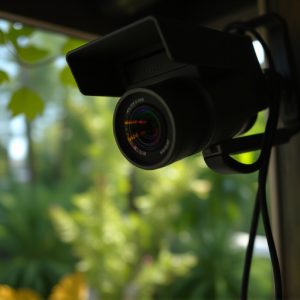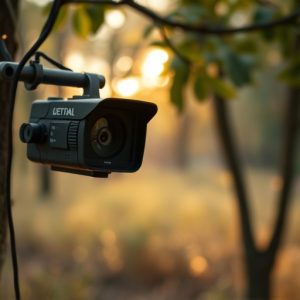RF Detector Sweep: Unveiling Hidden Cameras with AI Integration
RF detector technology powered by Spy Camera AI offers advanced privacy and security solutions. Inte…….
RF detector technology powered by Spy Camera AI offers advanced privacy and security solutions. Integrating RF signals with AI algorithms allows for accurate detection of hidden cameras, undetectable to the human eye. This real-time analysis enhances security protocols and is crucial in today's world where Spy Camera AI integration is increasing. The history of spy cameras from bulky models to AI-integrated digital devices showcases technological advancements. AI-driven systems now detect motion, recognize faces, and learn patterns, revolutionizing surveillance. Conducting RF detector sweeps with specialized devices enabled by this technology involves systematic area coverage, real-time feedback, and targeted investigation upon detecting active spy cameras. The future of spy camera detection includes automated processes, reduced human error, and proactive protection through advanced AI algorithms.
Uncover the insidious world of hidden cameras with our comprehensive guide, equipping you with the knowledge to detect and prevent these clandestine devices. We explore the cutting-edge technology behind RF detectors and their role in identifying spy cameras, delving into historical advancements that have led to today’s sophisticated surveillance equipment. With AI integration, we analyze how advanced algorithms revolutionize camera detection, offering a step-by-step tutorial for conducting your own RF sweeps. Get ready to navigate this modern-day enigma.
- Understanding RF Detector Technology and Its Role in Camera Detection
- The Evolution of Spy Cameras: A Historical Perspective
- Integrating Artificial Intelligence for Advanced Hidden Camera Identification
- Step-by-Step Guide: Conducting an RF Detector Sweep
- Future Trends: AI-Driven Spy Camera Detection and Prevention
Understanding RF Detector Technology and Its Role in Camera Detection
RF (Radio Frequency) detector technology plays a pivotal role in detecting hidden cameras, especially with the integration of Spy Camera Artificial Intelligence. This advanced system leverages RF signals to actively hunt for and identify camera transmissions, which are often invisible to the naked eye. By analyzing subtle electromagnetic patterns, these detectors can pinpoint the location of hidden devices, ensuring privacy and security in various settings.
The synergy between RF detection and AI integration enhances precision and efficiency. Artificial Intelligence algorithms can process vast amounts of data from RF signals, filtering out noise and interference to zero in on specific camera transmissions. This real-time analysis allows users to take proactive measures against surveillance, making it an indispensable tool in today’s world where Spy Camera Artificial Intelligence is increasingly being integrated into security protocols.
The Evolution of Spy Cameras: A Historical Perspective
The history of spy cameras is a fascinating journey that mirrors the evolution of technology itself. From their modest beginnings as simple photo traps, these devices have undergone a remarkable metamorphosis. Early models were bulky and required physical presence for activation, making them less than ideal for covert operations. However, with the advent of digital technology, spy cameras became smaller, more sophisticated, and capable of capturing video footage discreetly.
The integration of artificial intelligence (AI) has further revolutionized spy cameras. AI-powered systems can now analyze real-time video feeds, detect motion, recognize faces, and even learn from previous interactions—a game-changer for both law enforcement and private investigators. This advancement allows for more efficient surveillance, enabling users to uncover hidden truths and navigate the intricate tapestry of modern security landscapes.
Integrating Artificial Intelligence for Advanced Hidden Camera Identification
In today’s digital era, advancements in technology have given rise to innovative applications for artificial intelligence (AI). One such application is its integration into RF detector sweep processes for hidden camera identification. By leveraging AI algorithms, spy camera detection can be significantly enhanced. These intelligent systems can analyze vast amounts of data from RF sweeps, identifying unique patterns and signatures associated with hidden cameras that might otherwise go unnoticed.
The Spy Camera Artificial Intelligence Integration improves accuracy and efficiency in detecting these clandestine devices. AI-powered software can learn to recognize subtle changes in electromagnetic signals, enabling faster and more precise identification of hidden cameras. This technology revolutionizes the field of security by providing a robust solution for navigating the labyrinthine landscape of potential surveillance threats, ensuring folks are protected from unwanted peepers.
Step-by-Step Guide: Conducting an RF Detector Sweep
Step-by-Step Guide: Conducting an RF Detector Sweep
To begin, equip yourself with a radio frequency (RF) detector designed to pinpoint hidden cameras utilizing AI integration for enhanced accuracy. Turn on the device and calibrate it according to the manufacturer’s instructions. Start by sweeping the area of interest methodically, moving in a structured pattern to ensure comprehensive coverage. As you traverse the space, observe the real-time feedback provided by the RF detector—it may emit distinct sounds or display visual cues indicating the presence of an active spy camera.
Focus on areas where hidden cameras are most likely to be placed, such as corners, behind furniture, or in plain sight disguised as everyday objects. If a strong signal is detected, pause and investigate further using the detector’s zoom function for more precise targeting. Remember, Spy Camera Artificial Intelligence Integration empowers your RF detector with advanced capabilities, making it easier than ever to uncover clandestine surveillance devices.
Future Trends: AI-Driven Spy Camera Detection and Prevention
The future of spy camera detection and prevention looks promising with the integration of Spy Camera Artificial Intelligence (AI). AI algorithms are increasingly sophisticated, capable of analyzing vast amounts of data in real-time to identify hidden cameras. This technology leverages machine learning models that can adapt and improve over time, making it an effective countermeasure against evolving surveillance techniques.
By integrating AI into RF detector sweeps, security professionals can automate the process of detecting hidden cameras, minimizing human error and increasing efficiency. Advanced AI systems can not only pinpoint the location of covert cameras but also predict potential hotspots where such devices are more likely to be installed. This proactive approach promises to revolutionize privacy protection in both public and private spaces, ensuring a safer digital environment with continuous improvements driven by AI integration.
The evolution of spy camera technology has led to a pressing need for advanced detection methods, which is where RF detector sweeps and artificial intelligence integration shine as game-changers. By understanding the historical perspective of spy cameras and their increasing sophistication, we can appreciate the significance of AI in enhancing security measures. The step-by-step guide provided offers a practical approach to using RF detectors, while also highlighting future trends that suggest an AI-driven world is on the horizon for spy camera detection and prevention. This comprehensive tutorial equips readers with valuable insights into navigating this modern-day enigma.


